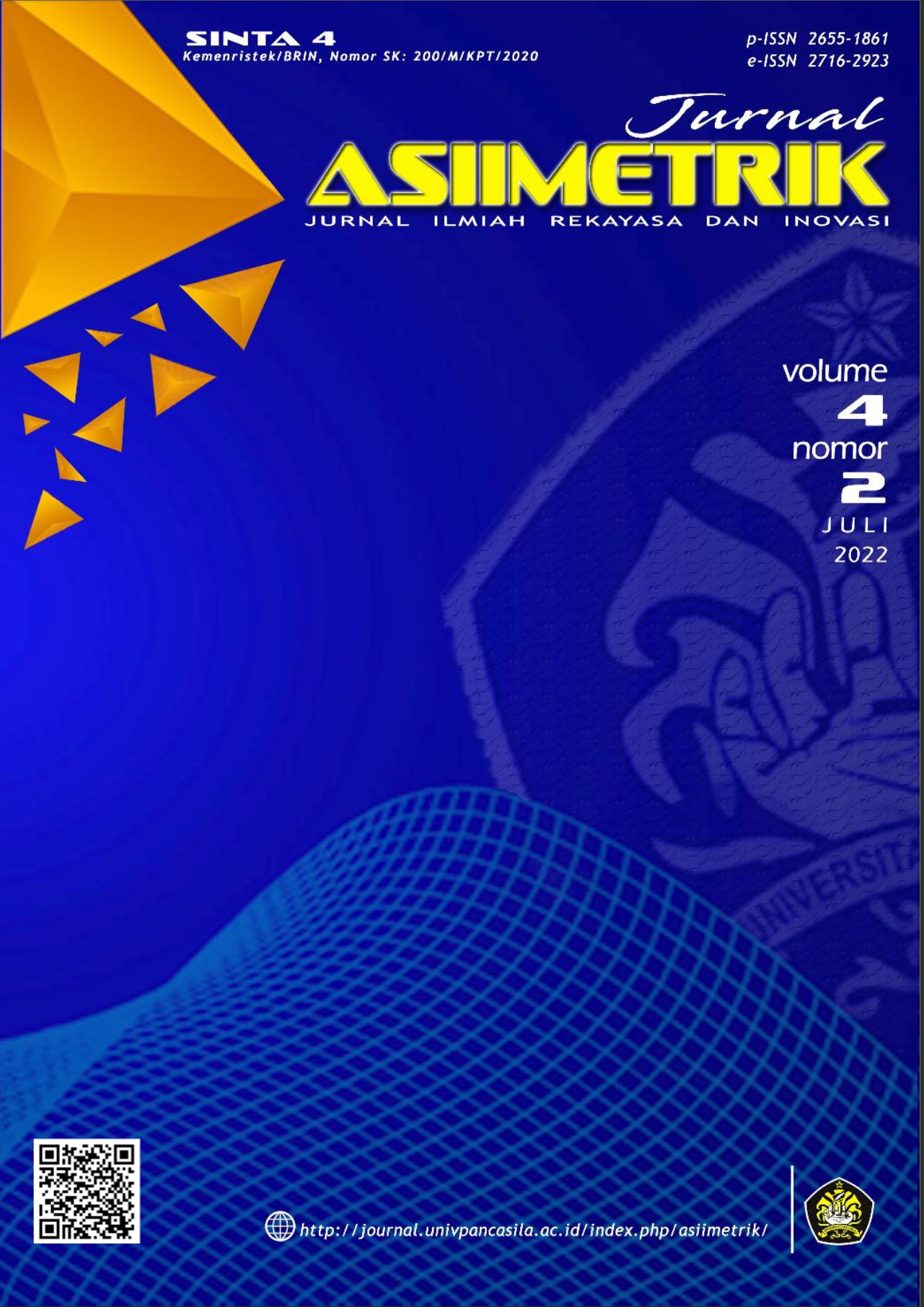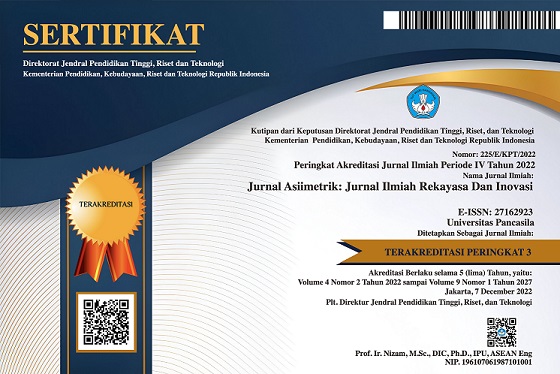Perancangan Prototipe Pembangkit Listrik Tenaga Gelombang Sungai Menggunakan Gerak Translasi Magnet Permanen
DOI:
https://doi.org/10.35814/asiimetrik.v4i1.3349Keywords:
permanent magnet generator, river waves, translation, renewable energyAbstract
Fossil energy sources are becoming increasingly expensive and will be unable to meet future energy demands. To address the scarcity of fossil fuels, many researchers are turning their attention to renewable energy sources. These sources of energy include wind, solar, geothermal, ocean waves, and others. The area around South Sumatra is rich in rivers, so this study utilizes the waves of the Musi River as the driving force for the River Wave Power Plant (PLTGS). The mechanism of this PLTGS is a permanent magnet generator designed to utilize the waves of the Musi River as the driving input of the generator. The river waves will move the float above, which has been arranged vertically with several permanent magnets, which will cut the magnetic field from the stator coil. The generator is designed to move translationally according to wave motion. The movement of the magnet also occurs from the impulse of the water wave, which causes the magnet to approach the stator coil and produce an induced electromotive force on the generator. Six generators are used, with each generator containing four Neodymium magnets and 1500 coils. The respective induced voltages are stored temporarily in the capacitors of the generator. The entire generator is connected in series. From the calculation results, the calculation results of the induced emf multiplied by the coil and the number of turns is 18.17 volts. Meanwhile, from the direct measurement results, the average voltage that can be generated is 10.9 volts. There is a voltage difference of 7.24 volts between theoretical calculations and direct measurements. This difference is caused by losses in the tool, such as friction, air gaps, and cable length. A permanent magnet generator that moves with the waves of the river can be used to make electricity, according to the results of this study
Downloads
References
Aminuddin, J. (2015) ‘Persamaan Energi untuk Perhitungan dan Pemetaan Area yang Berpotensi untuk Pengembangan Pembangkit Listrik Tenaga Gelombang Laut’, Wave: Jurnal Ilmiah Teknologi Maritim, 9(1), hal. 9–16.
Armoudli, E. dkk. (2019) ‘A Case Study of Energy Harvesting by Dynamic Tidal Power in the Persian Gulf’, in 2019 Iranian Conference on Renewable Energy & Distributed Generation (ICREDG), hal. 1–6.
Dashti, R. dkk. (2020) ‘Transient Analysis of Tidal Power Plant Connected to Network When Faced with Symmetrical and Unsymmetrical Faults’, in 2020 7th International Conference on Electrical and Electronics Engineering (ICEEE). IEEE, hal. 165–169.
Galloway, G.S. dkk. (2017) ‘Modeling and interpretation of tidal turbine vibration through weighted least squares regression’, IEEE Transactions on Systems, Man, and Cybernetics: Systems, 50(4), hal. 1252–1259.
Mtukushe, N.F. dan Ojo, E.E. (2021) ‘The Study of Electrical Power Generation from Tidal Energy in South Africa’, in 2021 Southern African Universities Power Engineering Conference/Robotics and Mechatronics/Pattern Recognition Association of South Africa (SAUPEC/RobMech/PRASA). IEEE, hal. 1–6.
Paik, J.-M., Hwang, T.-G. dan Lee, Y.H. (2019) ‘Demonstration and Evaluation of Small Tidal Current Power Systems’, in 2019 IEEE Asia-Pacific Conference on Computer Science and Data Engineering (CSDE). IEEE, hal. 1–2.
Sewnarain, S., Onunka, C. dan Akindeji, K. (2020) ‘Assessment of Tidal Energy as Alternative Energy Source in South Africa’, in 2020 International Conference on Artificial Intelligence, Big Data, Computing and Data Communication Systems (icABCD). IEEE, hal. 1–7.
Shokrani, H. dan Milano, F. (2020) ‘Short-Term Stochastic Modeling of Virtual Power Plants with Inclusion of Wind, Solar and Tidal Generation and Energy Storage’, in 2020 IEEE International Conference on Environment and Electrical Engineering and 2020 IEEE Industrial and Commercial Power Systems Europe (EEEIC/I&CPS Europe). IEEE, hal. 1–6.
Warak, P. dan Goswami, P. (2020) ‘Overview of generation of electricity using tidal energy’, in 2020 IEEE First International Conference on Smart Technologies for Power, Energy and Control (STPEC). IEEE, hal. 1–6.
Windisari, D., Agustina, S. dan Dwirina, Y. (2018) ‘Rancang Bangung Pembangkit Listrik Tenaga Gelombang Sungai Musi’, in Prosiding Seminar Nasional AVoER X 2018. Seminar Nasional Penelitian dan Pengabdian kepada Masyarakat AVoER 10, Fakultas Teknik Universitas Sriwijaya, hal. 728–732.





























